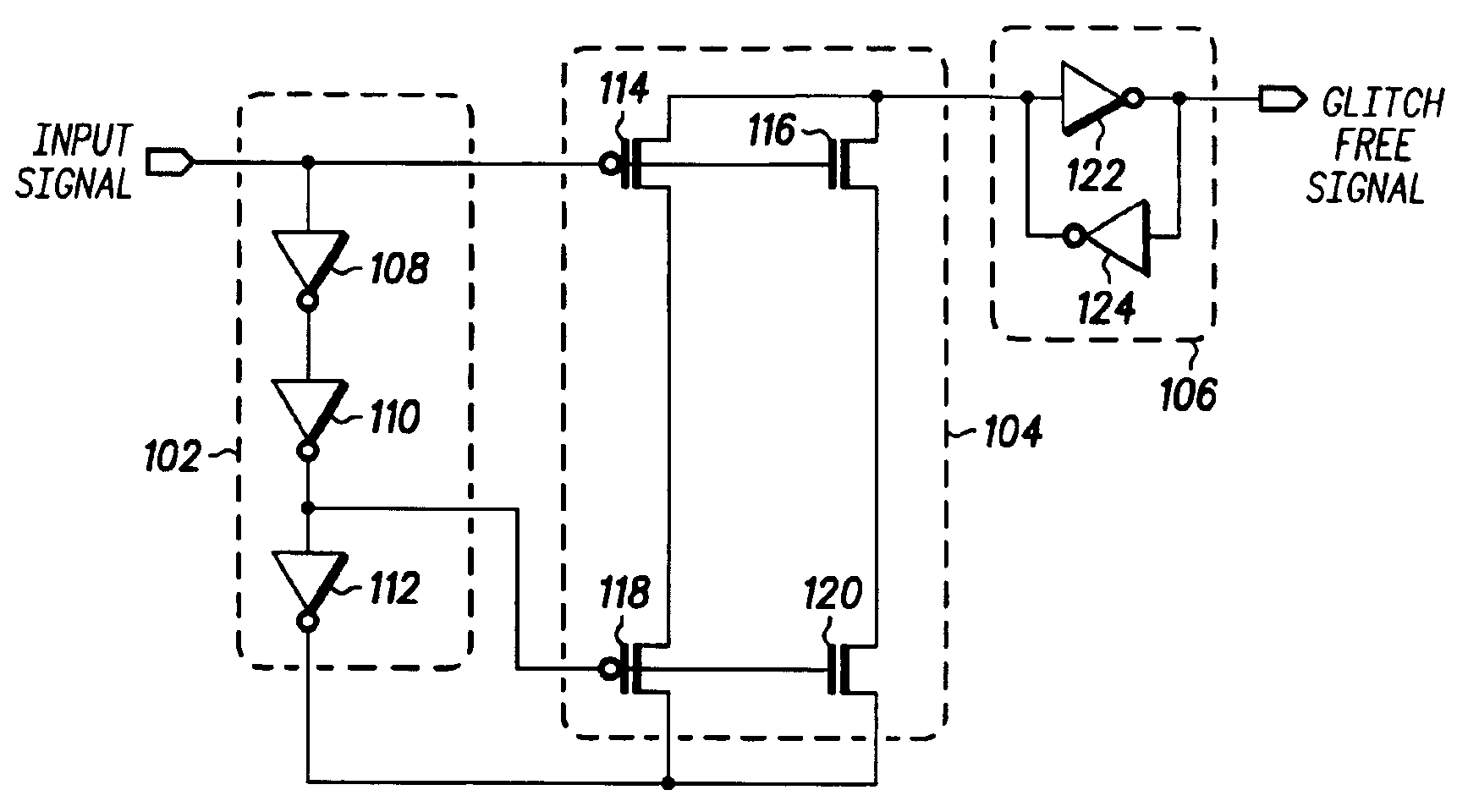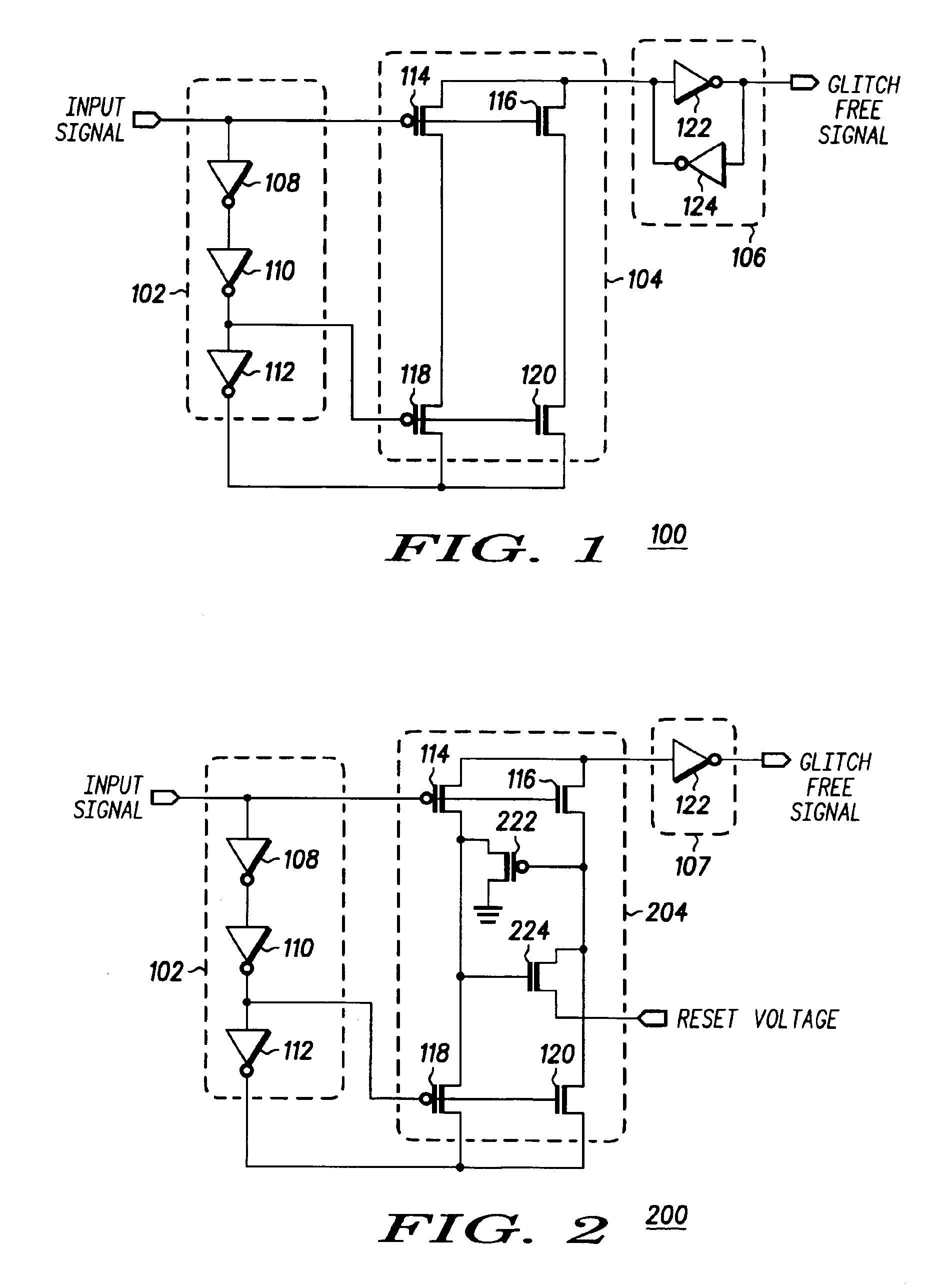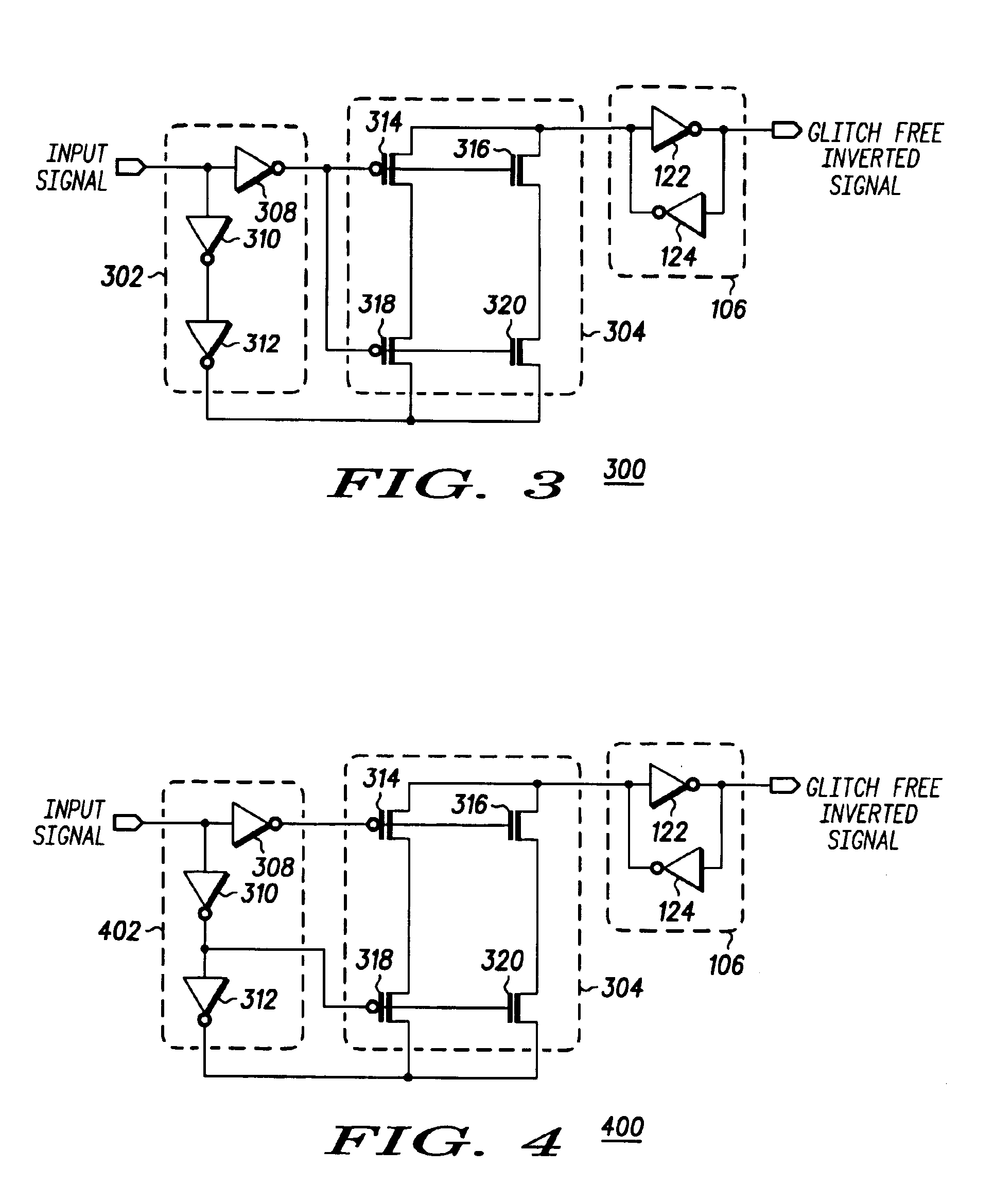Glitch removal circuit
a technology of glitch removal and circuit, which is applied in the field of circuits, can solve the problems of short overshoot period, noisy environment of electrical circuits, and noise generation of spurious components in the input or output signals of circuits
- Summary
- Abstract
- Description
- Claims
- Application Information
AI Technical Summary
Problems solved by technology
Method used
Image
Examples
Embodiment Construction
[0015]The detailed description set forth below in connection with the appended drawings is intended as a description of the presently preferred embodiments of the invention, and is not intended to represent the only form in which the present invention may be practiced. It is to be understood that the same or equivalent functions may be accomplished by different embodiments that are intended to be encompassed within the spirit and scope of the invention.
[0016]For convenience, terms that have been used in the description of various embodiments are defined below. These definitions are provided merely to aid the understanding of the description, and are not to be construed as limiting the scope of the invention.
[0017]GRW—GRW is an acronym for Glitch Removal Width, which is the width of the maximum width glitch that can be removed from the input signal by a glitch removal circuit. It is desirable to have a high GRW for a glitch removal circuit.
[0018]PRI—PRI is an acronym for Performance ...
PUM
 Login to View More
Login to View More Abstract
Description
Claims
Application Information
 Login to View More
Login to View More - R&D
- Intellectual Property
- Life Sciences
- Materials
- Tech Scout
- Unparalleled Data Quality
- Higher Quality Content
- 60% Fewer Hallucinations
Browse by: Latest US Patents, China's latest patents, Technical Efficacy Thesaurus, Application Domain, Technology Topic, Popular Technical Reports.
© 2025 PatSnap. All rights reserved.Legal|Privacy policy|Modern Slavery Act Transparency Statement|Sitemap|About US| Contact US: help@patsnap.com



